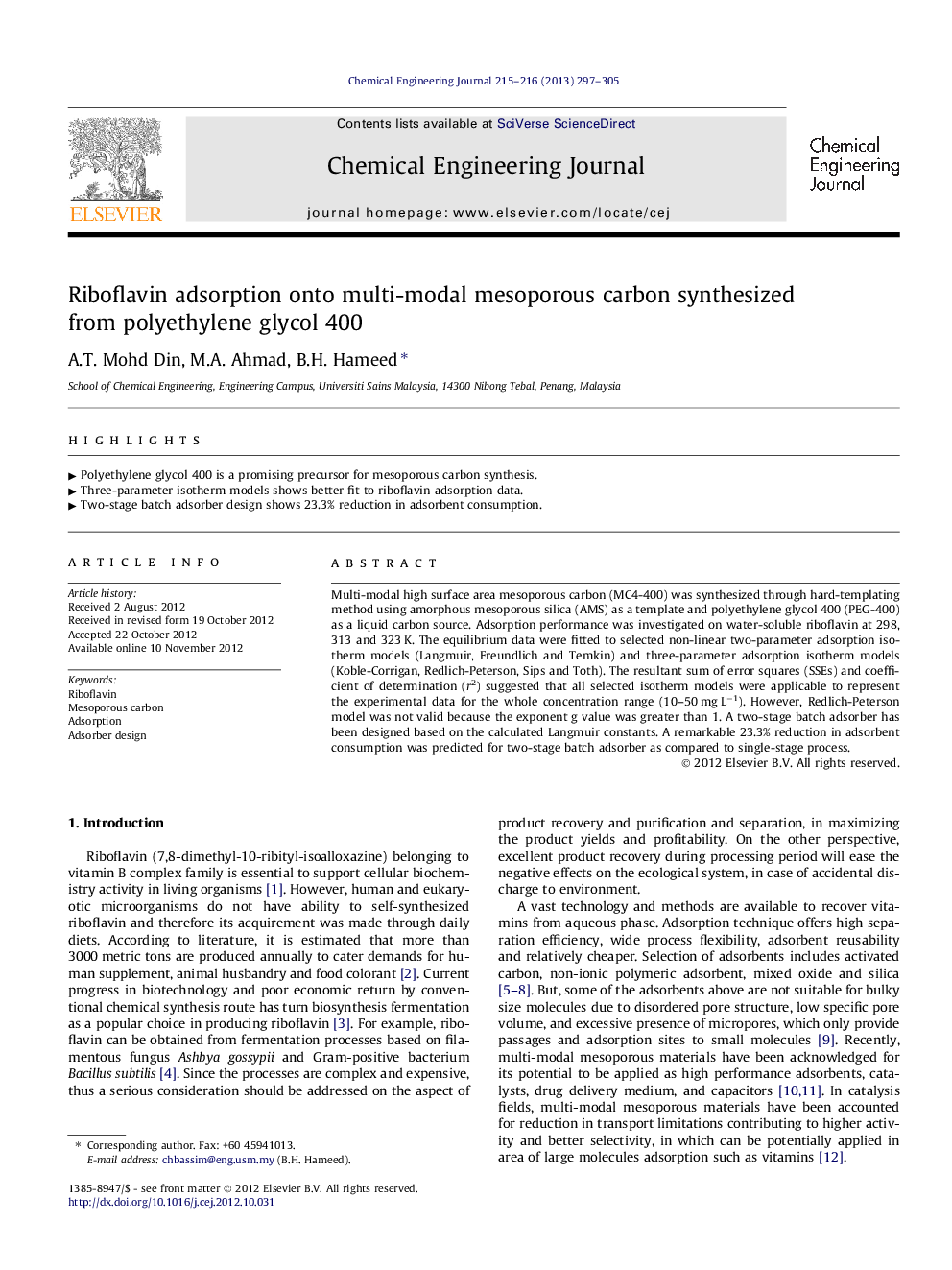| Article ID | Journal | Published Year | Pages | File Type |
|---|---|---|---|---|
| 148958 | Chemical Engineering Journal | 2013 | 9 Pages |
Multi-modal high surface area mesoporous carbon (MC4-400) was synthesized through hard-templating method using amorphous mesoporous silica (AMS) as a template and polyethylene glycol 400 (PEG-400) as a liquid carbon source. Adsorption performance was investigated on water-soluble riboflavin at 298, 313 and 323 K. The equilibrium data were fitted to selected non-linear two-parameter adsorption isotherm models (Langmuir, Freundlich and Temkin) and three-parameter adsorption isotherm models (Koble-Corrigan, Redlich-Peterson, Sips and Toth). The resultant sum of error squares (SSEs) and coefficient of determination (r2) suggested that all selected isotherm models were applicable to represent the experimental data for the whole concentration range (10–50 mg L−1). However, Redlich-Peterson model was not valid because the exponent g value was greater than 1. A two-stage batch adsorber has been designed based on the calculated Langmuir constants. A remarkable 23.3% reduction in adsorbent consumption was predicted for two-stage batch adsorber as compared to single-stage process.
• Polyethylene glycol 400 is a promising precursor for mesoporous carbon synthesis. • Three-parameter isotherm models shows better fit to riboflavin adsorption data. • Two-stage batch adsorber design shows 23.3% reduction in adsorbent consumption.
